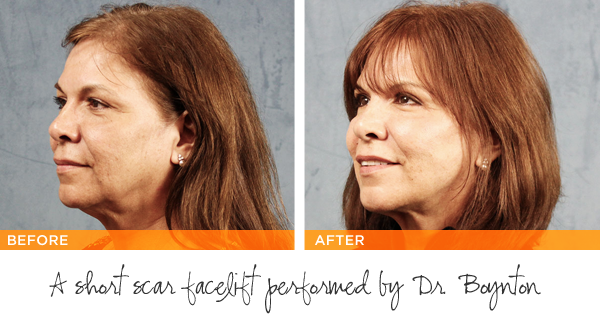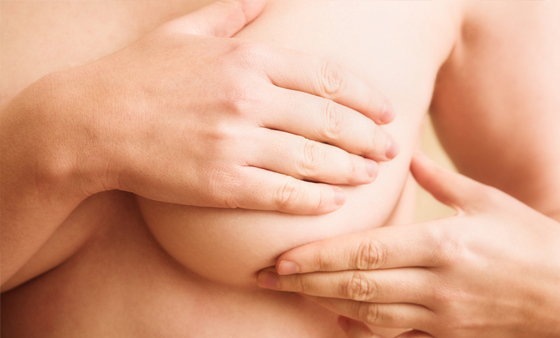

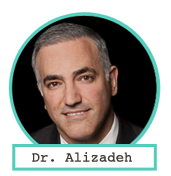
What are the major factors that drive Fab Over Fifty (FOF) women to have cosmetic breast surgery?
One type of woman has been happy with her breasts her whole life. She thinks her breasts fit her body and they look fantastic. Then she goes through multiple pregnancies or weight gain and loss and she loses the shape she had. A 50-year-old woman will show me an old photo and tell me she wants her breasts to look as good as they used to look.
A second type of woman has always wanted her breasts to look different; Either reduced because she has large breasts she doesn’t like or enhanced because she doesn’t like being flat chested. But she never had the opportunity to do anything about it. Now her children have gone off college, or she may be divorced and ready to start a new relationship, and she’s ready to pay more attention to herself.
A woman with large breasts also tends to feel the physical effects by the time she’s in her 40s and 50s, which include neck and back strain and skin rash. Like anything over time, your body takes a toll.
You invented a procedure called NaturaBra™. Tell us about it.
The breast lift procedures available to this point made the breasts look good for six months but then the results disappeared. A patient’s skin stretches and the gushy soft stuff inside (tissue) tends to fall. With nothing to support it, the breast falls right back down. Breast lifts didn’t last.
When we do a facelift, the foundation is on the bone so it’s tougher and tighter. There isn’t a tough layer under the breast, so it doesn’t tend to hold itself upright. You need to put something in it that supports it from beneath, but everything proposed was synthetic or made of animal products and other foreign bodies.
NaturaBra™ is a hammock, created by the internal deep layer of the skin, on which the breast tissue sits. It’s like a sling and it doesn’t sag later on. This internal support is anchored to the ribs to hold the breast tissue.
How long is that surgery?
It adds a half hour to the lift surgery, so a total of 2.5 hours.
Do other doctors do it?
We train other doctors to do it.
Cost?
It’s approximately $10,000 for everything, including facility, anesthesia and the surgery.
Can NaturaBra™ be combined with a breast reduction or enhancement?
Yes.
What are the factors motivating cosmetic facial surgery?
Changes start to happen around your eyes when you’re in your 30s, around the mouth in your forties, and the neck tends to be an issue when you’re in your 50s. Years ago, surgery was the only option, so many women waited for issues to accumulate and then they had the big surgery. Now women can take smaller measures when they’re younger, such as lasers and injections. They can act on the changes in their face as they notice them.
Are we vainer today?
I don’t think so. I view cosmetic surgery (aesthetic medicine) on the same spectrum as reconstructive surgery. We’re vain whether we have a horrific burn or a cleft lip or you’re a normal fifty-year- old who wants to look the best she can for who she is. If the options we have today were available to your mother, she would have felt the same way. The times we live in dictate how we get to live our lives. We’re all wired the same genetically. Your mother just didn’t think it was ok to talk about and act on the changes in her face, or that it would be safe to do something.
Today, we know about the importance of dental care and everyone wants to have nice teeth, but no one told your parents about the necessity of caring for their teeth. Your parents didn’t advise you to take care of your skin when you were young, but now you and your kids are religious about using sun block. Education, information and technology give each generation advantages over the previous generation.
What procedures are most popular with FOFs and why?
Breast augmentation is the #1 procedure for all women in the US today, but eyes are the #1 concern for women over 50. Eye procedures are not seen as invasive or require as much down time as neck surgery or facelifts.
What’s involved in eye surgery?
When a woman had bags under her eyes in the past, we removed the fat from her lower lids, but now we remove excess skin from the top lid and tighten and lift the lower lid. A nice smooth face has a tight and smooth flow from the eyelashes down to the cheeks. There also should be a smooth transition from the cheeks to lips.
How effective are injections around the eyes versus cosmetic surgery?
Lasers and other non-invasive treatments are trying to effect change. Although they’re good, they’re not as impressive and impactful as surgery. They don’t make a huge difference for long periods of time. Expectations are changing. In the past, you’d have one big treatment later on that you would expect to last seven to 10 years. Now women have little treatments that last a few months. Botox is a good example. It works great but the effects last only a few months.
After eyes, what do women over 50 care about most when it comes to surgery?
The neck.
Can you do the neck alone?
Most women incorrectly believe that a facelift involves the entire face. Actually, a facelift involves only the lower part of the face and the neck. Jowls and hanging neck skin bother women most and you can’t fix one without the other. A neck lift and a facelift are intimately interconnected.
Should you do the eyes at the same time?
When it looks really nice on the bottom part of the face, you start thinking what’s going on up there? When one part looks natural and the other doesn’t, we’re wired to see the big difference.
How should we really decide what doctor to use?
There are three important things to consider:
- The right qualifications and certification. You’d be amazed at how many smart, educated and sophisticated women make mistakes about the surgeon they choose. They’ll use a surgeon who isn’t certified because he did some Hollywood star or they heard about a surgeon at a party.
- Multiple consults to gain understanding. The more you’re in the market, the more you understand it. As you gain understanding, there’s an intuitive sense whether a procedure makes sense for you. Have a checklist and ask all the doctors the same questions. Ask all the people the same questions so a pattern will emerge.
- Feeling connected when you sit down with a doctor. Not as soul mates, but you should feel he or she will be able to take care of you if there’s a problem. If anyone tells you there won’t be pain or problems, you should walk out of the office immediately. A doctor’s staff and nurse must also demonstrate a communal feeling for every patient.
I heard we shouldn’t have voluntary anesthesia after 60 because it causes more brain cells to die. Is that true?
We’re working on the skin and the layers under the skin in plastic surgery, so it’s not life threatening. We’re not inside the heart or the bowels.
We worried about anesthesia 20 years ago, but we worry about it less now because of current monitoring and techniques. It’s not as big a scare as people think. Age is not an issue at all with anesthesia. All patients must go to their medical doctors to be cleared. We do workups on every patient; some include stress tests, others do not.
It’s riskier to cross Park Avenue than to have modern anesthesia, especially for someone who is healthy. If, however, a patient has severe heart disease or uncontrolled diabetes, then there’s a higher risk and it would be wise to avoid operating on these patients. If you’re on a blood thinner, for example, it may not make sense to go off the thinner and affect your heart so you can have a facelift.
What kind of surgery do you perform most?
I do breast surgery and eyelid surgery most because my research is in that area, but I have expertise in other areas. Most of my referrals come from friends of other patients and I get recommendations from other doctors, especially for revisional surgery, from obstetricians and gynecologists and internists.
Is it crazy for a 60-year-old to do tummy surgery? Isn’t it very painful?
I insert a pain pump in the tummy that keeps the area numb for the first five days. The patient rarely has to take pain medication. We’re also much less invasive now and the techniques we use relieve the tension on the skin, so scarring is less and the recovery is much faster.

.

Dr. Kaveh Alizadeh
New York Plastic Surgical Group
960-A Park Avenue
New York, New York 10028
Click here for more locations.
Tel: (212) 879-8506
Fax: (516) 742-4716
Click here to view Dr. Alizadeh’s profile.

![]()
![]()
![]()






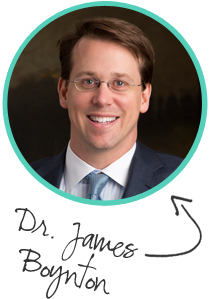
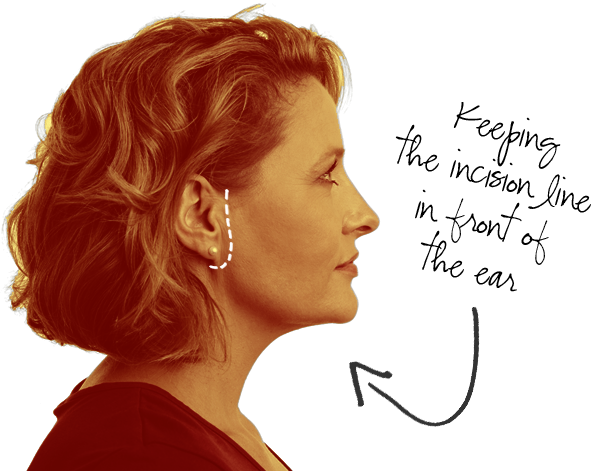 from the jowl area and tightens the neck muscle (platysma), which works like an internal support to keep the neck refined. The latter corrects the vertical banding, as well.
from the jowl area and tightens the neck muscle (platysma), which works like an internal support to keep the neck refined. The latter corrects the vertical banding, as well.